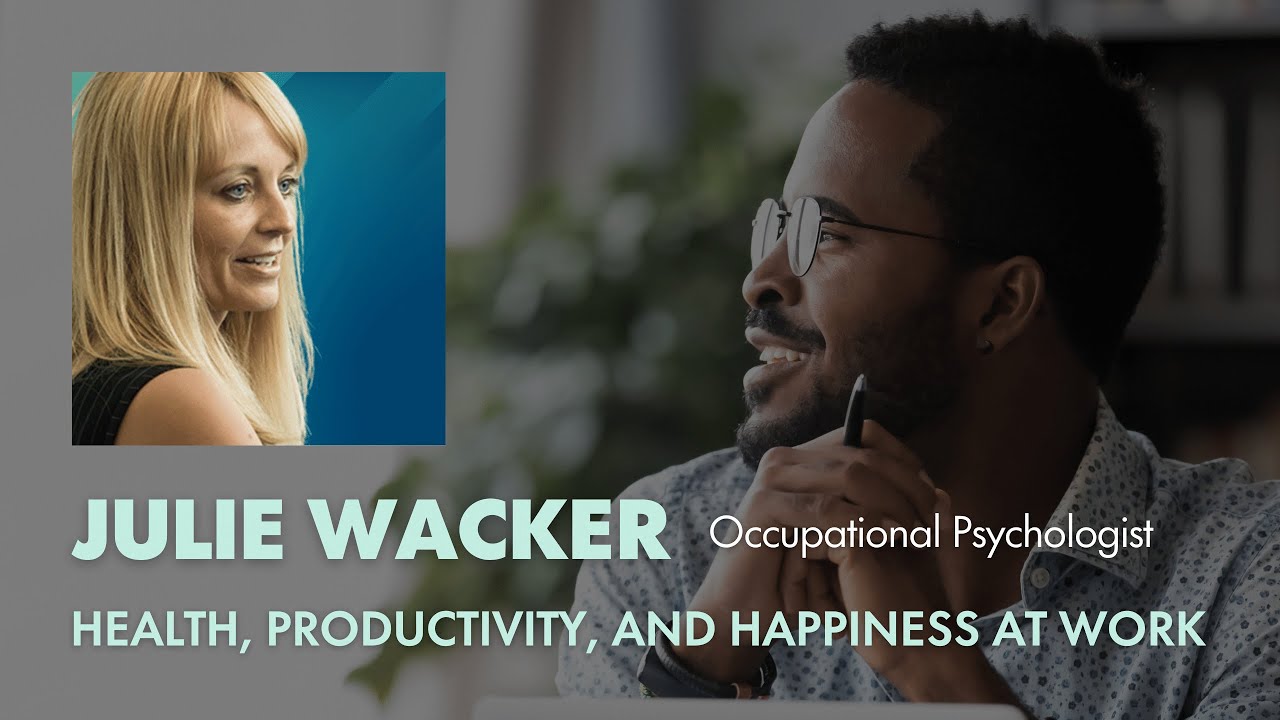“Wellbeing isn’t fluffy, we want positive pressure at work”.
Modern business is often defined by change, myriad projects and increasing regulation, but also culture, employee experience and wellbeing. Somewhere in the middle is the sweet spot of positive performance. Julie Wacker, occupational psychologist at Robertson Cooper spoke to Matt Duncan, managing director at Protiviti, about finding the balance.
Wellbeing is a much talked about concept. In conversations about culture, and employee experience, the word has made significant inroads into corporate life. But what does it really mean? On one hand, meditation classes, fruit bowls and wellness apps have dominated perceptions; but, on the other, expectations have continued to increase, sometimes leading to burnout.
In a wide-ranging discussion, Julie Wacker, organisational psychologist at Robertson Cooper, was quick to dismiss wellbeing as “fluffy”. She argued that it was directly linked to positive pressure, connecting with others, a sense of achievement, and meaning – and had nothing to do with meditating alongside a massive workload.
Here are five talking points from the first Tackling Tomorrow Today event of 2023, which took place on 27 April, online.
Wellbeing is linked to productivity.
From a psychological point of view, wellbeing has two strands: first, experiencing positive emotions; secondly, having some meaning. Individuals will rate themselves better at work when their wellbeing is high; supervisors and managers will do the same.
There is also a symbiotic relationship between health and psychological wellbeing, such as reduced cardiovascular risk, diabetes, and immune reactions. Ultimately, good wellbeing equals good performance.
Related: 4 performance management techniques to improve productivity
There are four pillars that define wellbeing at work.
If ten people were asked to define wellbeing, they might provide ten different answers. But when they close their laptops, what has enabled them to have a good day at work? There are four factors:
1. Experiencing positive emotions, a bit of excitement perhaps. Flow – being deeply immersed in a task – can be an important part of the experience.
2. Connection with colleagues: the fact people can collaborate with others, speak up, and talk about projects and challenges.
3. Achieving tasks. Most people say they’ve had a good day when they get through the tasks which they have set.
4. Some of those tasks have meaning. People want to come into work and do the job they are meant to do and create impact.
Related: Why embracing different opinions in your team is important
Leaders have a strong role to play.
Consider wellbeing as a cultural issue with three layers: What can individuals do to have more good days at work? How do managers and leaders create more good days for their teams? At an organisational level, how are policies and processes supporting people? Do businesses have support services during periods of high demand or change?
Wellbeing is often driven at the individual level, but it needs to be done across all three levels to be effective. In an ideal world, someone on the leadership team would drive it; in reality, it often sits with HR or the safety department. The only way to really achieve it is from the top.
Data will help to understand wellbeing.
But use it wisely. A cultural diagnostic tool will help to explore where pressures are coming from. Often, people will say they have too much to do, which means they aren’t achieving tasks. But there are often multiple factors at play, such as a lack of autonomy over work, or a lack of resources. There are always aspects of the culture which are stopping people getting on and doing their work.
Proactive businesses aim to understand the causes, drivers, and the outcomes of wellbeing, to understand what is causing poor wellbeing and how it’s impacting performance. Predictive modelling can help them to see the signs of people likely to leave, for example, and prevent it from happening. Power BI is a useful tool to help companies to integrate their wellbeing data.
Don’t just rely on engagement surveys, however. People often score highly on engagement surveys because they are committed; but low on wellbeing, because they just keep going until burnout.
The same is true for resilience. If businesses just looked at resilience, they might do more harm than good. In a high-pressure environment with demanding projects, asking people to be more resilient isn’t going to go down well.
Positive pressure is the key for modern workplaces.
Wellbeing is often talked about as a nice, fluffy thing, but it’s not fluffy at all. People respond better and get a sense of wellbeing, with healthy, positive pressure. Wellbeing is poor when pressure is low, because people don’t experience a sense of achievement; healthy pressure means people are performing at their best and achieving tasks; too much pressure can lead to burnout.
In the era of hybrid working, there are two ways businesses can create positive pressure and good wellbeing: establishing clear boundaries around collaboration when people are together or working remotely; and making sure expectations and goals are 100 per cent crystal clear, because there are fewer opportunities to check in during the day.
In summary, Julie advised businesses to make wellbeing a cultural priority and present the business case to leadership teams. This would help to shift the perception of wellbeing from something fluffy, to one based on performance.
By asking the right questions and collecting the right data, it will be easier to understand the systemic issues and challenges that are hindering people from having a good day at work, she said.
To take part in Robertson Cooper’s ‘Good Day at Work’ challenge, click here to register complete the survey.
The next event in Protiviti and Robert Half’s Tackling Tomorrow Today series – on Tuesday 13 June – will feature Anne Marie Imafidon, who is on a quest to bring new people and perspectives into the tech industry.








